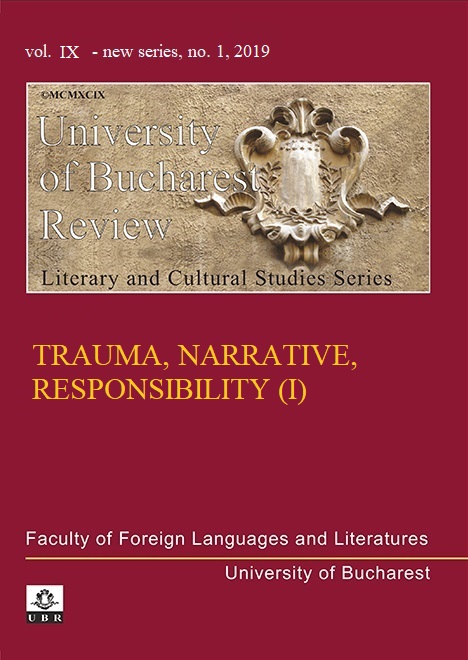THE REPRESENTATION AND OVERCOMING OF PERPETRATOR TRAUMA IN RACHEL SEIFFERT’S AFTERWARDS
THE REPRESENTATION AND OVERCOMING OF PERPETRATOR TRAUMA IN RACHEL SEIFFERT’S AFTERWARDS
Author(s): Paula Romo-MayorSubject(s): Fiction, Philology
Published by: Editura Universităţii din Bucureşti
Keywords: acting out; combat veteran; holes; palimpsestic structure; perpetrator trauma; Rachel Seiffert; working through;
Summary/Abstract: Rachel Seiffert’s novel Afterwards (2007) explores the ethically challenging and often neglected fact of perpetrator trauma resulting from sustained structural violence. This controversial subject is conveyed through the stories of Joseph and David, two British ex-servicemen belonging to different generations, who attempt to overcome their war traumas years after their respective involvement in The Troubles in Northern Ireland (from the late 1960s to the Good Friday Agreement of 1998), and the Mau Mau Uprising (running from 1952 to 1960), that ended with Kenya’s independence. The novel fittingly organises the narrative around moments of acting-out, when the protagonists feel equally disconnected from self and world, yet deal with their traumatised condition in strikingly different ways. The paper proposes an analysis of Afterwards from the perspective of Trauma and Memory Studies, with a view to exploring how the “palimpsestuous” (Dillon 4) structure of the novel, along with the repetitive use of imagery evoking holes and emptiness (Bloom 210), allow Seiffert to “perform” (Ganteau and Onega 10) the workings of the disturbed psyches of Joseph and David, so that it builds the unrepresentability of trauma into the textual fabric of the novel.
Journal: University of Bucharest Review. Literary and Cultural Studies Series
- Issue Year: IX/2019
- Issue No: 1
- Page Range: 1-9
- Page Count: 9
- Language: English

